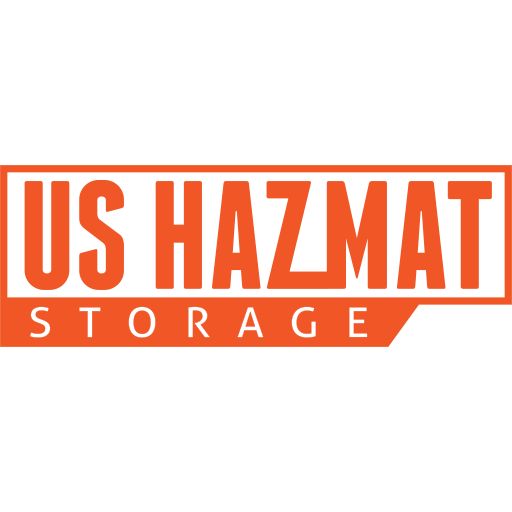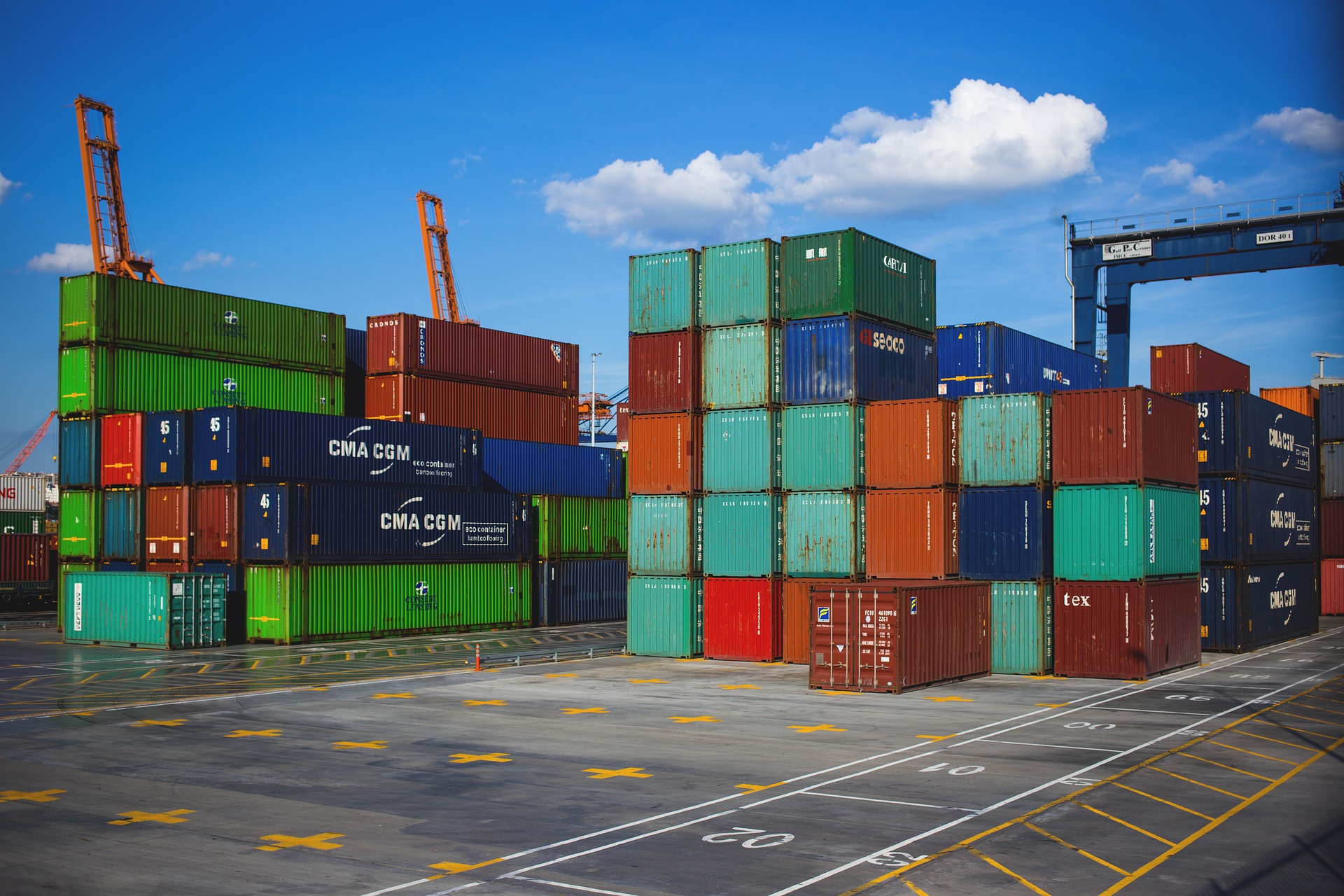The Short Answer? Definitely Not.
When you’ve been in the chemical storage business as long as we have, you field some pretty strange or outlandish questions. Many of these general inquiries are relatively harmless. As you might imagine, there’s a pretty steep learning curve when it comes to safely storing hazardous materials. So, there’s really no dumb or wrong answers when it comes to learning how to safely store dangerous chemicals. While it’s not rocket science, understanding the different properties of a wide range of dangerous chemicals might mean a quick refresher course in high school chemistry. And like any other business expense, companies are always looking for the cheaper alternative to pad the bottom line. But safety is one line item you don’t want to overlook when calculating the upcoming year’s fiscal budget. Without a doubt, many first-time customers will almost always ask, “Can you store hazardous materials in shipping containers?” At first glance, this might make sense. Both shipping containers and fire-rated storage lockers are made of steel, so either should do for storing dangerous chemicals, right? Not exactly. As we will explain in greater detail, the differences between both storage lockers couldn’t be more obvious and could mean the difference between life and death of workers, as well your company’s livelihood.
What’s the Difference Between a Shipping Container and Chemical Storage Warehouse
To the untrained eye, there might not be a lot of obvious differences between a shipping container and a U.S. Hazmat Storage fire-rated storage locker. At a first look, both appear to be large metal storage containers that can be easily shipped to almost anywhere and used for a variety of purposes. Both look relatively sturdy and capable of withstanding a battery of abuse, but like any other innovation in engineering, the devil is in the details. Shipping containers are designed for the bulk transport of goods via sea, rail or land. Some companies uses shipping containers for long-term on-site storage. While this is acceptable for noncombustible and compatible materials, storing dangerous chemicals in unventilated and non-fire-rated shipping containers can lead to wide range of problems to give any project manager nightmares for decades to come.
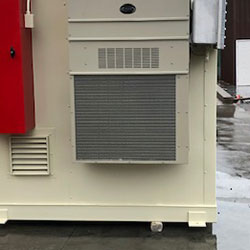
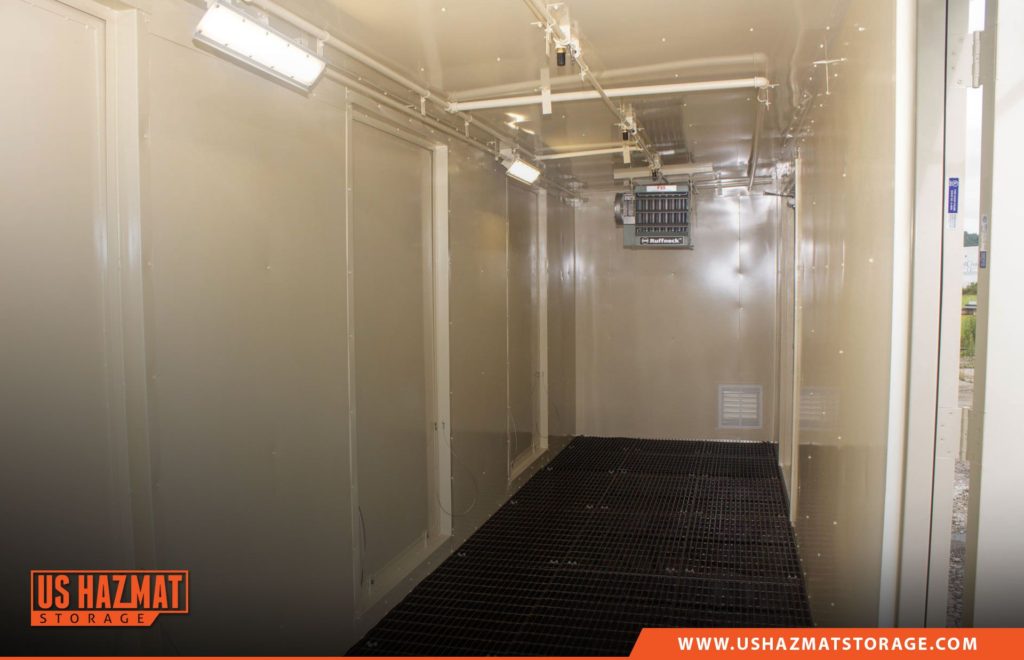
While similar in appearance, U.S. Hazmat Storage’s fire-rated storage lockers offer additional safety features and protections that you just can’t find on a standard shipping container. For starters, our fire-rated storage lockers are equipped with passive and optional mechanical ventilation that ensure explosive gasses and dusts are continuously vented out of the chemical storage payload. To prevent environmental contamination or site degradation, all chemical storage lockers are equipped with an innovative spill sump containment system that is firmly fixed to the bottom of each storage locker. In the event of a chemical spill, all material will simply fall through the steel grated floor and into a sump basin where it will remain until the material can be safely extracted. Optional fire suppression systems can also quickly douse flames and prevent small fires from spreading to nearby structures of vulnerable personnel.
The Perils of Improper Storage
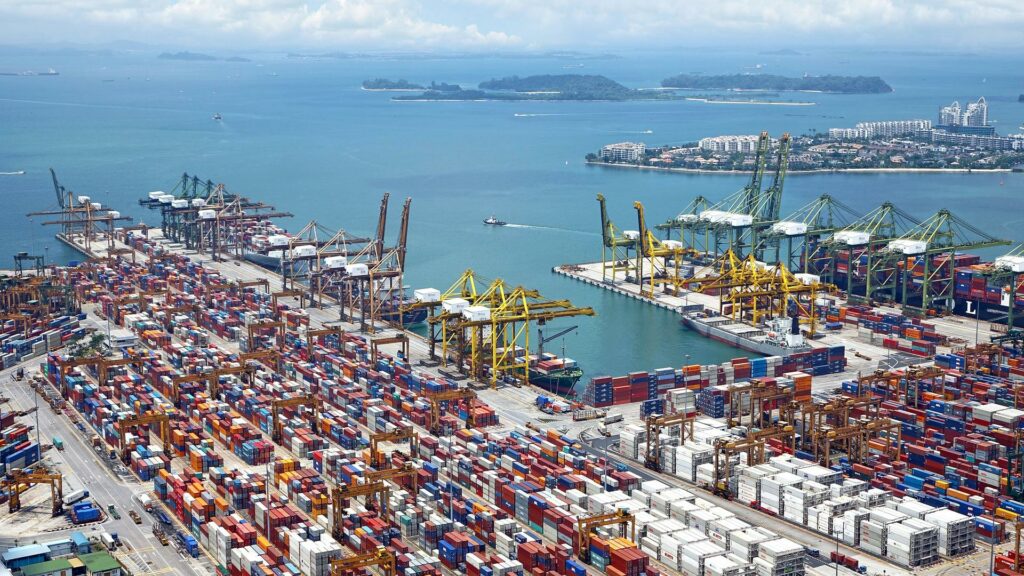
Still not convinced that a chemical storage locker is superior to a shipping container in almost everyway? Ok, we admit that science and engineering can be a little dry at times, but what’s also unsavory is the end result of what happens when common sense and ignoring industry experts is consistently ignored. In Bangladesh, at least 34 people were killed when several shipping containers holding hydrogen peroxide suddenly exploded following a fire at a storage depot.
“The explosion sent fireballs in the sky. Fireballs were falling like rain. We were so afraid we immediately left our home to find refuge… We thought the fire would spread to our locality as it is very densely populated,” he said.
While hindsight and happenstance are often bedfellows, to say this accident could’ve been prevented is of little solace to the afflicted family members. But this lesson is a recuring and enduring one that should resonate with every project manager or safety engineer. Accidents such as these are completely preventable and such egregious lackluster oversight is inexcusable when via safety options exist for storing dangerous chemicals. Not all steel storage options are created equal. Each U.S. Hazmat fire-rated storage locker is manufactured with explosion relief panels that are designed to release in the event that an explosion occurs within your hazmat storage locker. Our buildings are designed to resist a minimum internal pressure of 217 pounds per square foot, with two (2) pressure-relief panels located on the exterior wall designed to release at an internal pressure of 20 pounds per square foot. Needless to say, our hazmat storage lockers are superior to standard shipping containers in almost every way and are virtually impervious to almost any threat. So, the next time you find yourself asking, “Can You Store Hazardous Materials in Shipping Containers?” Remember the valuable lesson from this horrific port incident in Bangladesh.

